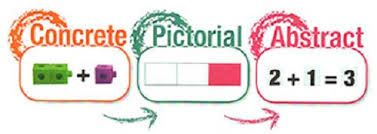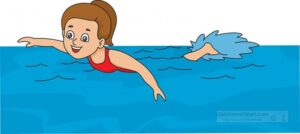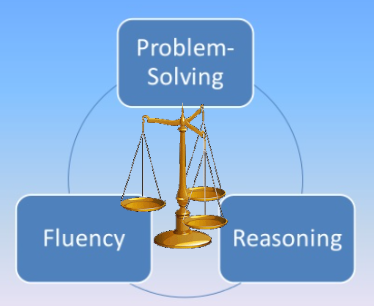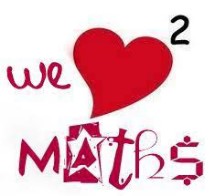Mathematics
Maths Curriculum At Geoffrey Field Junior School
The aim of our maths curriculum is that our pupils leave us with:
- A love of maths and an understanding that all pupils can be great mathematicians
- An ability to think mathematically and to discover and learn something for themselves
- Secure mental maths and fluency skills. They will have rapid recall skills such as number bonds and multiplication / division facts and a range of mental maths strategies that they can select from in order to quickly and efficiently carry out calculations mentally or using informal recordings.
- Secure written calculation skills using formal written methods
- The ability to solve problems and the resilience to seek solutions to these problems, including those that require more complex reasoning and application of other areas of maths.
Our Maths Curriculum at Geoffrey Field Junior School:
Since September 2016, we have been using mathematics mastery approaches associated with Singapore Maths in our maths curriculum – this is based upon best practice research and ensures that we are offering our pupils a high quality maths curriculum. The Department for Education, the National Centre for Excellence in Teaching Mathematics (NCETM), the National Curriculum Review Committee and OFSTED have all emphasised the successful teaching and learning approaches developed in Singapore. We use Government approved maths schemes of learning (Power Maths and White Rose Maths), which we tailor and adapt, where necessary, to our pupils.
Based on the most up to date research and the 5 big ideas in teaching for mastery, we have developed our own 11 key principles in maths which underpin our Maths curriculum:
| Exploration | Children should have the chance to explore in maths and not just be told what to do. This will ensure children gain a deeper understanding and enjoyment of maths |
|
| Collaboration | Children should have the opportunity to work with others and discuss their mathematical ideas and understanding |
|
| Conceptual not just procedural | Procedural fluency and conceptual understanding are developed in tandem because each supports the development of the other. It is vital to teach deep understanding of concepts rather than just teaching processes. |
|
| Concrete – Pictorial – Abstract | No matter what the age or ability of the pupils, new maths concepts are taught and explained using concrete – pictorial – abstract (C-P-A) approach which enables pupils of all levels of attainment to develop a deeper and more secure understanding. Children are encouraged to represent and explain abstract thinking using CPA approach. |
|
| Struggle is good but drowning is bad | We develop positive mind-sets and attitudes in maths. We believe that providing tasks, which challenge pupils, promotes resilience and perseverance. On-going assessment will ensure that all pupils have learning tailored to their needs. We strongly believe that pupils should continually be challenged and so adapt lessons and resources to ensure that pupils ready for greater depth learning are provided with more challenging tasks. However, we also support pupils with surgeries, CPA approach, equipment, small steps of learning, repetition or consolidation of small steps and interventions, when necessary, to ensure that they do not feel as though they are drowning. Pupils receive timely and effective further support where needed. |
|
| Balance of fluency, problem solving and reasoning | Children will become confident mathematicians by having a balance of fluency, problem solving and reasoning skills. Lessons have problem solving at their heart and pupils will be challenged to find multiple ways of solving problems, rather than just a focus on getting the correct answer. |
|
| Fluency is key | Fluency in maths is crucial to make other areas of maths more accessible. A daily focus in fluency and mental maths supports pupils confidence, speed and agility in other areas of maths. To become fluent, we aim for our children to be able to rapidly recall number facts, derive other facts and have a range of mental strategies to draw upon. We want them to be able to use a range of methods and select an efficient method of their choice (whether this be mental or written, using jottings where needed) and for it is appropriate for a given task. |
|
| Small steps – big gains | Learning in maths is broken into small steps to make it manageable for pupils and to enable them to become more successful. Small steps are assessed to ensure children are ready to move on to the next step. We teach longer units which are broken into these smaller steps, so that there is sufficient time for pupils to properly secure their understanding and apply into further problem solving activities. |
|
| Varied practice | Children have the opportunity to learn new skills and concepts but apply them in different ways. They develop depth of mathematical understanding through variation rather than repetition. This ensures that children think and learn while also practising their maths. |
|
| Making links | We make connections in maths by referring back to and reviewing previous learning. We make links between units of maths and mathematical concepts and ensure that pupils link concrete, pictorial and abstract ideas in maths by teaching them alongside each other wherever possible. Our curriculum is designed so that there is a coherent and detailed sequence of content to support sustained progression over time. |
|
| Enjoyment | Maths should be fun and enjoyable for the pupils. Through challenge, interesting task designs and application, where possible, pupils develop a love of maths. |
|
What we teach
Long Term Plans
Our Curriculum reflects the expectations of the National Curriculum for maths for each year group. Using the Power Maths and White Rose schemes of learning, objectives are grouped together to form longer units of work, which we teach over the year. If pupils are not secure in their learning in any of the key weighted units (see assessment below), long term plans will be adapted to suit their needs. Pupils will receive teaching of appropriate learning objectives based on their needs and more opportunities to learn and consolidate key units of maths.
Long term plans, showing the units covered, can be found here.
Long Term Plans
Year 3
- Numbers to 1000
- Addition and subtraction
- Multiplication and division – table facts 3,4, 8 and word problems
- Further multiplication and division
- Length
- Mass
- Volume
- Money
- Time
- Statistics
- Fractions
- Angles
- Lines and shapes
- Perimeter
Year 4
- Numbers to 10 000
- Addition and subtraction within 10 000
- Multiplication and division – table facts 6,7,9,11, 12 and word problems including remainders
- Further multiplication and division
- Graphs
- Fractions
- Time
- Decimals
- Money
- Mass, volume and length
- Area
- Geometry – angles, shape and symmetry
- Position and movement
- Roman numerals
Year 5
- Numbers to a million
- Whole number addition and subtraction
- Whole number multiplication and division
- Whole number word problems
- Graphs
- Fractions
- Decimals
- Percentages
- Geometry
- Position and movement
- Measures
- Areas and perimeter
- Volume
- Roman numerals
Year 6
- Numbers to 10 million
- Whole numbers – 4 operations
- Fractions
- Decimals
- Measures
- Word problems
- Percentages
- Ratio
- Algebra
- Area and perimeter
- Volume
- Geometry
- Position and movement
- Graphs and averages
- Negative numbers
Progression of skills and calculations
Within each unit of work, there is a clear progression of skills which builds year on year. Each unit is broken into smaller steps of learning. As a school we have a clear, progressive calculation policy which outlines the key outcomes expected at the end of each year. We also have a more in depth calculation policy which shows each smaller step using the CPA approach to maths. As a school we have developed our own mental maths and fluency policy which shows clearly the progression of skills and methods in this area of mathematics. Teachers use this to inform their mental maths and fluency planning and teaching.
Our maths lessons
Children have daily maths lessons. Within most maths lessons there will be:
- Mental maths and fluency – Time to teach core mental strategies, teach and practise times tables, recall facts, derive known facts, time to practise mental/written strategies and time to revisit areas in maths already looked at.
- Discovery tasks – Time to explore and have a go at solving a problem. If they can do it, how can they show this? Can they explain their method or use a different method? It is a part of the lesson to assess what children can already do. It is time to provide children with concrete apparatus to support them and time for them to show their answer using C, P and/or A
- Sharing – A time for children to offer their methods to the teacher and class. The teacher models all/many methods on the board. As a class, they will discuss which is most effective or efficient and if the methods work. They will review, as a class and in pairs, other methods given by their peers and by their teachers.
- Let’s learn together – Teacher guides the pupils towards new methods or may explicitly teach one or two main methods. Teacher explicitly models the chosen method/s to the class using CPA approach. The teacher will gradually reduce scaffolding during this session by using CPA and by varying the questions and problems asked. There will be transition from teacher led to paired to independent (I do – we do – you do). Throughout this session children will still get the chance to answer questions and solve problems with others.
- Guided practice – Some pupils who have shown, during the anchor task or the let’s learn that they may need further teaching, are guided by an adult. Through guided practice, children become familiar with using their new skills to answer familiar problems.
- Independent practice – Children are given the opportunity to apply their understanding of the target method, working independently. There will still be concrete resources and chance to record pictorially through the session although some children may use these less as the practice session progresses.
- Challenge or further practice – Some children may require further practise. Further practice activities will allow children more repetition but with variation. Other children will have the opportunity to use their new skills to answer an unfamiliar problem or to work on more challenging problems, which require application and show understanding at greater depth.
- Time to reflect – time is given for children to show their methods and what they understand. Children may choose their preferred method to reflect in their books or use the modelled method and show their understanding of this for a new problem or context which has not been seen earlier in the lesson. It is a chance for children to self assess and say how they have found the lesson as well as opportunity for the teacher to make an assessment for the next lesson.
Assessment in maths
Assessment is at the heart of good maths teaching at GFJS. Assessments are carried out prior to maths units, within the units and at the end of the units as well as at key assessment points throughout the year.
Before we start teaching a new unit of work, teachers carry out a prior learning check which enables pupils to show what knowledge, skills and understanding they already have. This information is used by the teachers to:
- Identify anyone that might benefit from some pre-teaching lessons so that they are ready for the new challenges in the up-coming unit
- Flexibly group pupils for each unit so that everyone gets the right level of challenge
- Identify which objectives within the unit to focus on
Within maths lessons, teachers assess pupils and adapt learning based on the children’s needs.
At the end of each unit teachers assess each pupils’ learning and decide whether they have shown that they are working towards age expected learning, working at age expected learning or working at greater depth for that unit. We have a local agreement between the primary schools within our local cluster (WEC) that we will all assess maths in the same way and have an agreed set of criteria that we all use.
At the end of the year a summative judgement is made based upon the learning in each unit of work and pupils’ retention and application of learning over the year. In WEC we have agreed to weight some areas of maths – number, place value and calculations are given greater weighting than other areas of maths. Pupils who are not demonstrating secure learning in the first half of the year in these weighted areas will be given further teaching in the second half of the year to ensure that pupils leave each year group with secure learning in the key areas of maths.











